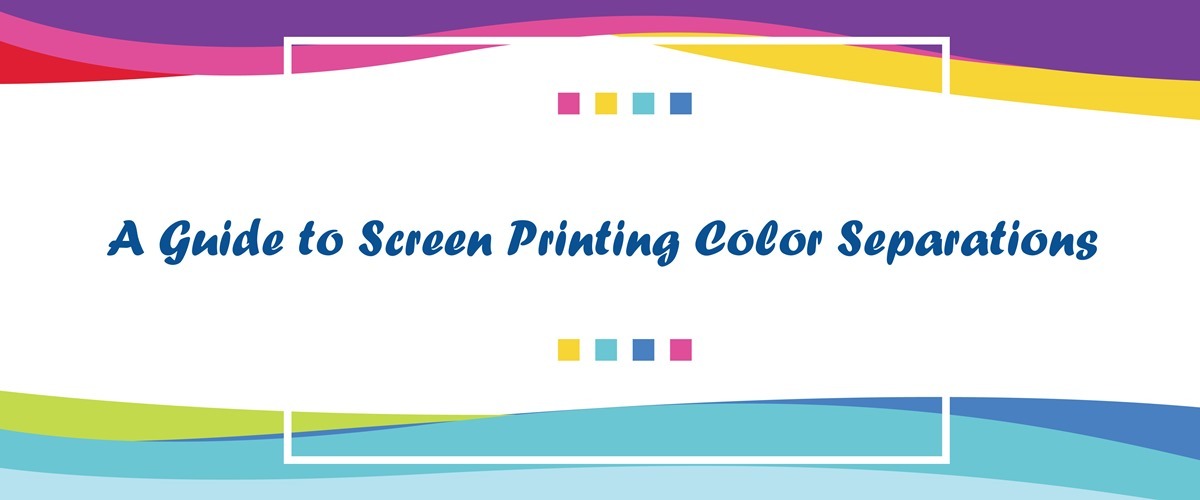Color separations are vital to the screen printing process, but they can be tricky! Here are the basics to get you started.
Types of Separations
There are a handful of separation processes that screen printers use. Understanding the different types of separations, and the challenges they present, can help you execute successful separations on a routine basis. Common screen printing color separations include:
- Spot color. The most common type of color separations used in screen printing is spot color separation. Spot color separations are done for vector images. While they are typically solid, spot color separations can include some halftone dots to create a shading effect. Spot color separations are usually created in CorelDRAW or Illustrator.
- Four-color process. The four-color process uses halftone dots of CMYK — cyan, magenta, yellow and black — to create detailed, photorealistic images. These types of separations are usually done in Photoshop, and creating a process color separation and printing four-color process correctly can be tricky.
- Simulated-process color. Like traditional four-color process separations, simulated-process color separations make use of halftone dots to create highly detailed or photorealistic images. The difference is that simulated process color separations utilize a range of ink colors. They tend to be more vivid than four-color process prints and can be printed on darker materials, unlike four-color process separations. Like four-color process separations, simulated-process color separations are done in Photoshop.
- Index color. Index color separations use square pixels of the same size, rather than halftone dots, to create color shading. Performing and printing and index color separation can be easier to perform than process separations. However, it often takes more colors to create a photorealistic print. The separations are performed in Photoshop, but images can be easily transferred from other programs, such as CorelDRAW or Illustrator.
Creating Color Separations
You absolutely can create successful color separations, project after project, relatively simply, with no additional training or fancy software. The best way to ensure quality color separations that result in accurate, clear screen prints is to create and follow a process for color separation time and time again. While different screen printers will develop their own quirks and preferences when it comes to creating separations, if you find and commit to a process that works for you, and pay attention to potential problems, you’ll increase the success rate of your separations and decrease waste in your shop.
- Start with good artwork. If a client sends you a low-resolution image, trying to make that image work can end in frustration for both you and your customer. Make sure all of your customers know what you need in an image to create a quality screen print, and make sure you address subpar artwork with customers, if it’s submitted. In the end, your customers will thank you for putting the time into finding or creating artwork that results in a quality print.
- Know which colors the separation will involve. Before you begin, identify which colors will be involved in the separation. Know what might cause you difficulties, such as gradient transitions from two opposite colors or unusual hues.
- Extract your colors. Separate each color, one at a time. For spot separations, make sure that any overlapping colors are eliminated from the color that is visually “beneath” to avoid printing layer upon layer of ink.
- Address potential problems. There are all sorts of problems that pop up with color separations, and the exact challenges you face will depend on which separation process you’re using and the image you’re printing. A four-color separation might show color pollution as you separate. That is, other colors entering the image that you weren’t expecting to be there. The CMYK palette that Photoshop defaults to is for printing on paper, so you might need to import your own CMYK palette. If you transfer a vector image into Photoshop, the program might automatically soften the edges with its anti-aliasing setting, which you might need to reverse. Ultimately, you need to know what potential problems your type of color separation might face, and be ready to meet those problems head on during your separation process.
Successfully Printing Your Separated Images
While color separation can be a significant portion of the production process, screen printers know that there’s much to be done to create a quality print from the images they’ve separated. Once you’re sure you’ve successfully executed your color separation, make sure you follow screen printing best practices to ensure a quality print. Create opaque film positives, and properly expose your screens. Make sure you’re using the right inks, mesh and squeegees for your project, and make sure that all of your tools are in good repair. And finally, check your press before you print: Loose print heads or pallets can jeopardize your registration, turning your successful color separation into a failed print.


